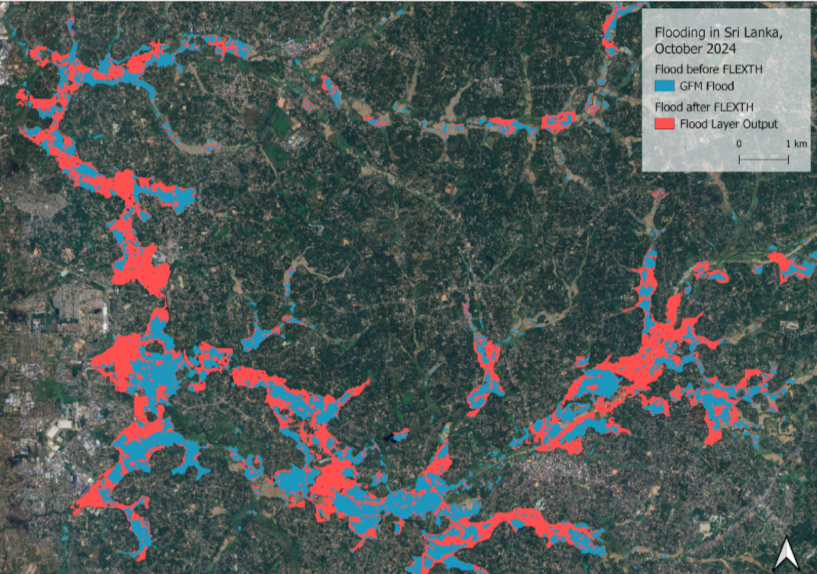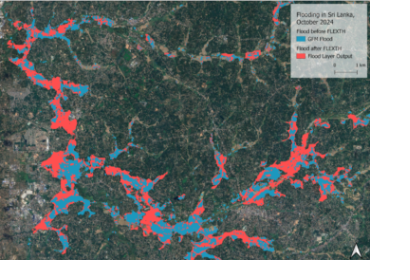
UN-SPIDER has released a new Recommended Practice that improves flood mapping by integrating Synthetic Aperture Radar (SAR) imagery with Digital Terrain Models (DTMs), offering a more accurate and reliable method for post-disaster assessment.
The methodology was developed in collaboration with the Joint Research Centre (JRC) of the European Commission. It addresses a common limitation of SAR data, which can struggle to detect floodwaters in complex environments such as urban areas, dense vegetation, or regions with varied topography. By combining SAR-derived flood layers with terrain elevation data and the Global Flood Monitoring (GFM) exclusion mask, this new approach provides more precise flood extent mapping and allows for the estimation of water depth.
The Recommended Practice was applied during the October 2024 floods in Sri Lanka, demonstrating its value in real-world disaster response. The integration of multiple data sources improved the detection of inundated areas and helped quantify the severity of flooding. These capabilities are essential for informing emergency response, estimating economic loss, and guiding recovery efforts.
Designed with accessibility in mind, the practice includes Python-based Jupyter Notebooks that allow users to implement the method even with limited experience in GIS or remote sensing. The code and workflow are openly available and support the broader goal of increasing the use of space-based tools in disaster management.
This Recommended Practice contributes directly to the mission of UN-SPIDER, which focuses on making space-based information available and usable for disaster risk reduction, particularly in developing countries. It also supports key Sustainable Development Goals, including SDG 11 (Sustainable Cities and Communities), SDG 13 (Climate Action), and SDG 9 (Industry, Innovation, and Infrastructure). To access the full methodology and tools, visit Recommended Practice: Flood Mapping with Radar Imagery and Digital Terrain Models | UN-SPIDER Knowledge Portal

